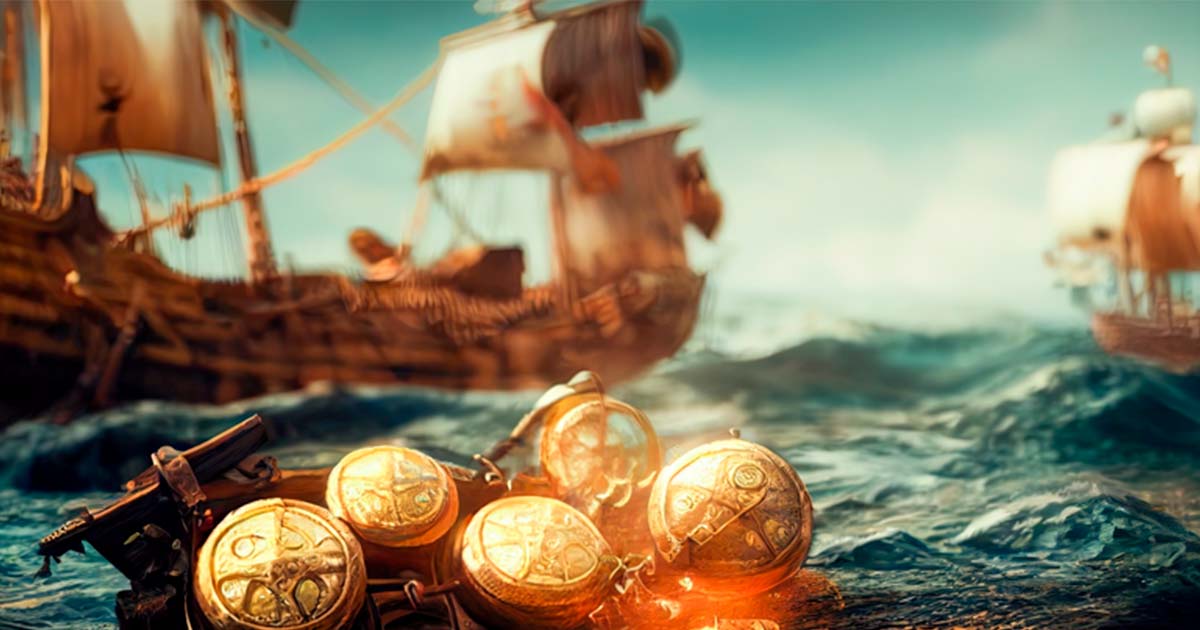Treasures of Nuestra Señora de Atocha $1Billion Cargo Displayed In New York
In September 1622, the Nuestra Señora de Atocha treasure ship sunk near the Florida Keys. Now, its $1.1billion cargo of plundered indigenous treasures, including a stunning Colombian emerald crucifix, a royal orb and a gold-and-emerald ring, are being displayed in New York.
When Nature Reclaimed The Priceless Emeralds
This story begins on September 4, 1622 AD, when the Tierra Firme flota, a Spanish treasure fleet, comprising twenty heavily-loaded ships, left the Havana port of Cuba, headed for Spain. The following day a hurricane smashed the Florida straits and eight of the ships were sunk.
Sailing as Almirante (rear guard), The Nuestra Senora de Atocha (“Our Lady of Atocha”), was carrying 265 people onboard. Its hull was stuffed with a vast cargo of treasure that was pillaged from Colombia, Peru, Mexico and Venezuela. The ships inventory included “24 tons of silver bullion in 1038 ingots, 180,00 pesos of silver coins, 582 copper ingots, 125 gold bars and discs, 350 chests of indigo, 525 bales of tobacco, 20 bronze cannons and 1,200 pounds of worked silverware”.
- The Curse Of The 1715-Spanish Plate Fleet: Run Aground On The Coast Of Treasure
- Holy Grail of Shipwrecks With $20 Billion of Treasure to be Raised from the Deep!

Some genuine silver reales (pieces of eight) from Mel Fisher’s salvage expeditions. (Yesterdays-Paper)
Furthermore, many other items including unregistered jewelry and personal goods were being smuggled to avoid taxation. On October 5th, a second hurricane struck and further destroyed the wreck of the Atocha, and for the next 60 years, Spanish salvagers searched for the galleon, but failed to find it.
“Today’s The Day, Cried Mel Fisher”
In 1969, Florida treasure diver, Mel Fisher, began a sixteen-year quest for the treasure of the Atocha, famously reminding his team everyday: “Today’s the day!” that they would discovery the Atocha’s “main pile.” In 1973, three silver bars were found matching the recorded weights and tally numbers found on the Atocha’s cargo manifest, which was housed at the Archive of the Indies in Seville.
Fisher's son Dirk, and his wife tragically died after a salvage boat capsized in 1975, and it was in July 1985, the main treasure pile was finally discovered in the ship's main hull. This haul included 70 pounds of Colombian emeralds, 180,000 silver coins, 24 tons of Bolivian silver, 125 gold bars and a collection of Venezuelan pearls.
Today, a broad array of artifacts from the Atocha and Margarita are on display at the non-profit Mel Fisher Maritime Museum’s permanent collection. Many of the treasures were emerald encrusted artifacts drawn from Colombia's Muzo mine, worth an estimated $1.1billion today.
- Treasure Hunter Given Go Ahead to Dig for $10 Billion Inca Hoard
- 10 Spectacular Treasures That Have Never Been Found

Some of the many items recovered from the Nuestra Señora de Atocha wreck. (Yesterdays-Paper)
Three Priceless Emerald Artifacts
While many of the treasures were torn apart in the sea, three spectacular items of jewelry were recovered from the ship's haul in near perfect condition, known as: The Royal Orb, The Atocha Ring and The Atocha Cross.
The Atocha cross features nine vividly green, emerald cabochons set into a rich, 22K yellow gold cross pattern and the Royal Orb, also most likely of Colombian origin, features 37 Muzo emeralds set into 22K gold. The Atocha Ring, features a brilliant watery-green Colombian emerald weighing approximately 2.5 carats, set in a high karat gold ring fashioned for 17th century Spanish royalty.

The Atocha Cross as it was at auction in 2015 (The Rosen Group)
In 2022, one emerald ring from the haul was valued at $60,000, and sold for over $1million. According to a report in The Daily Mail, when asked for the value of these items, Gabbi Harvey, head of business development at Muzo Emerald Colombia, said “they are priceless.” These spectacular jewels now survive as Muzo's The Private Collection - the largest, privately owned collection of emerald artifacts from the Nuestra Señora de Atocha.
Forgiving the Mine’s Colonial Past
Considered as wonders of the New World, Fisher regarded Muzo emeralds as “one of four mythical gemstones,” along with the rubies of Mogok, the sapphires of Kashmir and the diamonds of Golconda. Gabbi Harvey, head of business development at Muzo Emerald Colombia, told the Mail that their collection is not for sale, and that it is being displayed to “draw a line between the Muzo mine's colonial past and its current approach, which is focused on sustainability and helping the local community.”
Harvey added that the Muzo mine “wants people to understand the legacy of the mine and the stories behind it.” And while these spectacular emerald items will be displayed at The Winter Show at the Park Avenue Armory in New York until January 28, one’s mind ventures into the unexplored forests and hills of Colombia, wondering what further emeralds are still out there, waiting to be discovered.
Top image: Representation of Nuestra Señora de Atocha galleon generated by AI. Source: FrankBoston/Adobe Stock
By Ashley Cowie

















